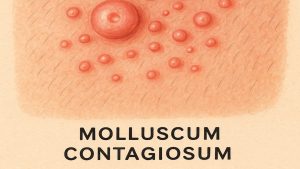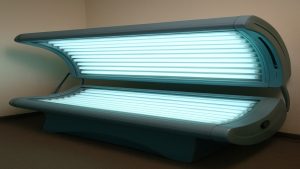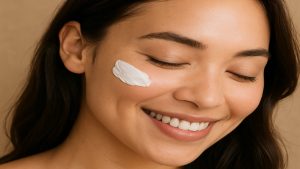- Clogged pores cause acne’s visible breakouts
- Affects up to 95% of teens & young adults
- Hormones, diet & genetics influence severity
- Consistent skincare helps prevent flare-ups
- Professional diagnosis guides tailored treatment
Acne is one of the most common skin conditions worldwide, often starting in adolescence and sometimes continuing into adulthood. It can impact self-esteem and overall well-being, making informed treatment vital.
This guide explains acne’s causes, subtypes, and treatment options, helping individuals understand how to achieve clearer, healthier skin safely and effectively.
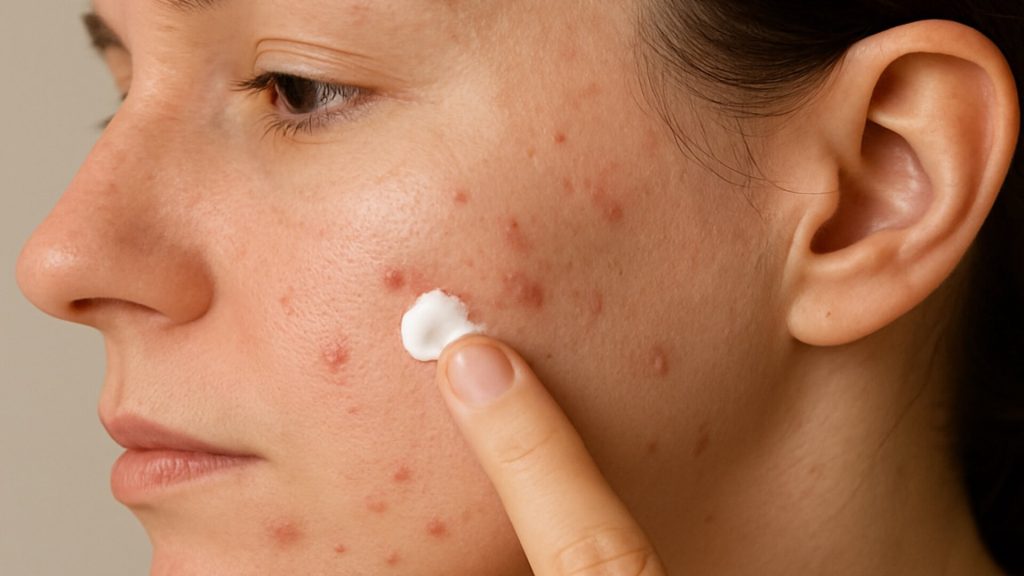
What Is Acne?
Acne occurs when hair follicles become blocked by oil, dead skin cells, and bacteria, leading to inflammation and spots. It affects up to 95% of people aged 11 to 30 in the UK, with most cases peaking in teenage years [1,3]. Around 10–15% of adults aged 35–44 continue to experience acne [2].
While most common on the face, acne can also appear on the back (up to 60%) and chest (around 15%) [1].
Historical Context & Understanding
Records of acne date back to ancient Egypt, around 1550 BCE, describing skin lesions resembling cystic acne [12]. By the 19th century, scientists recognised the link between hormones and oil production. Modern research now explores the combined roles of genetics, hormones, and environment in acne’s development.
Subtypes Of Acne & Their Features
Acne appears in several forms, from mild to severe. Each type requires different management strategies.
| Acne Subtype | Description | Common Areas |
|---|---|---|
| Blackheads | Small, dark, non-inflammatory bumps | Forehead, nose, chin |
| Whiteheads | Small, light, non-inflammatory bumps | Forehead, nose, chin |
| Papules | Tender, red, inflamed bumps | Forehead, cheeks, jawline |
| Pustules | Red bumps with white pus tips | Forehead, cheeks, jawline |
| Nodules | Hard, deep-seated lumps | Cheeks, jawline |
| Cysts | Large, boil-like, painful lumps | Cheeks, jawline |
Table 1: Common acne subtypes and locations
A healthcare professional can identify acne type accurately and suggest a suitable management plan.
What Causes Acne?
Excess sebum (oil) production combines with dead skin and bacteria, blocking follicles and causing inflammation. Hormonal changes, particularly during puberty, are a primary trigger [2].
Genetics also play a strong role. Individuals with parents who had severe acne are more likely to develop similar patterns [1]. Maintaining hydration and using non-comedogenic moisturisers can support skin balance.
Contributing Factors
Hormones, diet, stress, and environment can worsen acne.
- Diet: A 2020 JAMA Dermatology study linked high-sugar diets with increased acne risk [7].
- Lifestyle: Smoking has been associated with acne scarring, and humid climates can worsen breakouts [6].
- Medications: Certain drugs, such as corticosteroids, may temporarily aggravate acne by altering skin turnover.
Diagnosing Acne
A clinician assesses acne severity based on lesion type and count.
- Mild-to-Moderate: Up to 34 inflammatory lesions or 1–2 nodules
- Moderate-to-Severe: 35+ lesions or more than 3 nodules
Accurate diagnosis follows NICE guidelines, which recommend reviewing medical history and potential triggers [8].
Monderma’s healthcare professionals review photographs or video consultations to ensure accurate classification before treatment planning.
Conditions That Mimic Acne
Some conditions may resemble acne but require different care.
- Rosacea: Often shows redness and visible vessels; affects about 1.65 per 1000 UK adults [10].
- Folliculitis: Caused by infection or shaving irritation, producing small pustules [11].
A healthcare professional can distinguish these for proper management.
Effective Acne Treatment Options
When standard skincare is insufficient, prescription-based topical treatments can help. Monderma’s clinicians provide personalised formulations containing clinically supported ingredients.
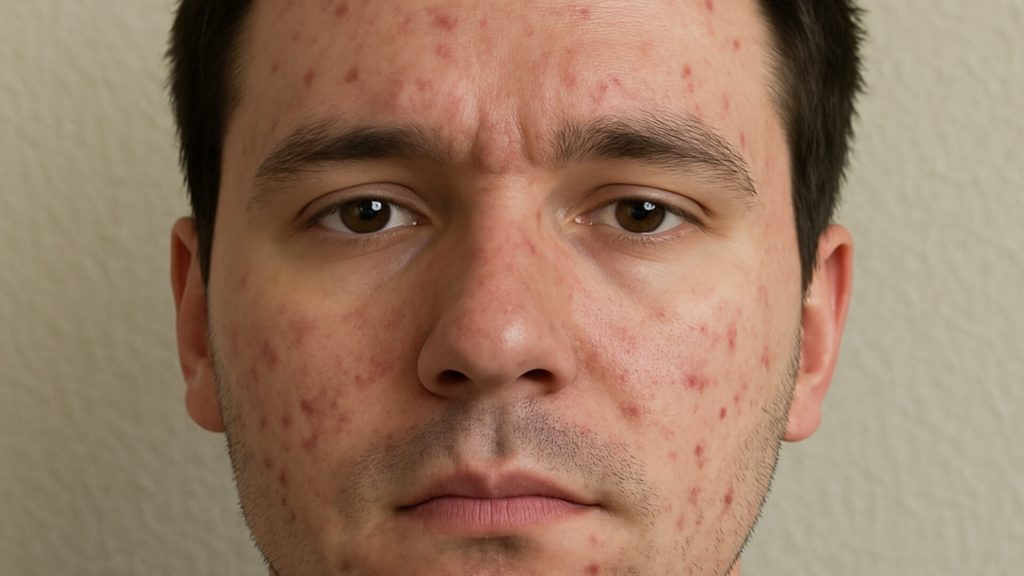
Key Active Ingredients & Their Roles
| Ingredient | Strength | What It Is | How It Helps Acne |
|---|---|---|---|
| Adapalene | 0.1–0.3% | A third-generation retinoid | Prevents clogged pores & reduces breakouts |
| Azelaic Acid | 3–20% | Natural dicarboxylic acid | Reduces bacteria & brightens dark marks |
| Clindamycin | 1% | Topical antibiotic | Targets acne-causing bacteria |
| Niacinamide | 2–4% | Vitamin B3 derivative | Regulates oil & calms redness |
| Tretinoin | 0.01–0.1% | Prescription retinoid | Boosts cell turnover to unclog pores |
Table 2: Active ingredients commonly used in acne treatment
All ingredients should be used under medical supervision to ensure safety and suitability.
Practical Tips For Acne-Prone Skin
- Cleanse Gently: Use mild, non-stripping cleansers twice daily.
- Apply Treatments Sparingly: Use a pea-sized amount to reduce dryness or irritation.
- Moisturise Daily: Non-comedogenic moisturisers help protect the skin barrier.
- Sun Protection: SPF 30 or higher prevents photosensitivity from active ingredients.
- Be Patient: Noticeable results often take 6–8 weeks [9].
Advanced Acne Scar Treatment Options
For persistent scars, dermatologists may recommend:
- Chemical Peels: Remove surface cells to smooth texture.
- Laser Resurfacing: Stimulates collagen to refine deep scars.
Both methods can improve acne scarring when performed under professional supervision. Individual results vary depending on scar depth and skin type.
Complications Of Untreated Acne
Without treatment, severe acne can lead to permanent atrophic scars such as ice-pick or rolling scars. Emotional and social effects are also common, highlighting the importance of early intervention.
Monderma’s Personalised Acne Care Approach
Monderma’s clinicians offer evidence-based acne treatments customised to skin type and severity. Through an online consultation, patients receive dermatologist-reviewed plans containing proven active ingredients.
This individualised method supports both skin clarity and long-term maintenance.
Conclusion
Acne is manageable with a tailored, consistent approach. Understanding its causes and treatment options empowers individuals to reduce breakouts, fade scars, and restore confidence.
You can complete a quick, free online consultation reviewed by a GPhC-registered prescriber to see if a prescription-strength formula could be right for your skin.
Content is for informational purposes only. Monderma treatments are prescribed following consultation. Results and timeframes can vary. Use as directed by your prescriber.
Bibliography
- NHS. Acne. 2020.
- Vasam M, et al. Acne vulgaris: A review of the pathophysiology, treatment, and prevention. Cureus, 2023.
- Bhate K, Williams HC. Epidemiology of acne vulgaris. Br J Dermatol. 2013;168(3):474–485.
- Del Rosso JQ. The primary role of sebum in the pathophysiology of acne. J Dermatol Treat. 2024.
- Teder-Laving M, et al. Genome-wide meta-analysis identifies novel loci conferring susceptibility to acne. Eur J Hum Genet. 2024.
- Capitanio B, Sinagra JL, Bordignon V, et al. Acne and smoking. Dermatology, 2009;218(2):119–124.
- Penso L, Dréno B, et al. Association Between Adult Acne and Dietary Behaviors. JAMA Dermatol. 2020;156(8):854–862.
- NICE. Acne vulgaris: management. NG198, 2021.
- Callender VD, Baldwin H, Cook-Bolden FE, et al. Effects of Topical Retinoids on Acne and Post-inflammatory Hyperpigmentation in Patients with Skin of Color. Dermatol Ther (Heidelb). 2021;11(1):1–15.
- Spoendlin J, Voegel JJ, Jick SS, Meier CR. A study on the epidemiology of rosacea in the U.K. Br J Dermatol. 2012;167(3):598–605.
- Dermatology of Seattle. Folliculitis: Why You Might Mistake It for Acne. 2025.
- SLMD Skincare. The (Bumpy!) History of Acne Treatments. 2024.
Find your perfect skincare formula
Takes less than 2 minutes – see what your skin needs
Get Custom Formula